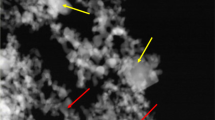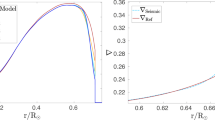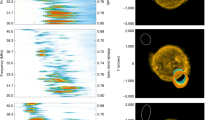Abstract
Das Gupta and Basu have reported a new method of determining the basic component of solar radio emission (B component)1. The analyses were made at frequencies of 1,000, 2,000, 2,800, 3,750 and 9,400 Mc/s for the years 1958 (sunspot maximum) and 1964 (sunspot minimum). The values obtained were in good agreement with those obtained experimentally by other workers. It was also shown that the factor by which the basic component changes from the sunspot maximum to the sunspot minimum depends on the frequency. The maximum to minimum ratio was found to be highest at 1,000 Mc/s and to fall off exponentially at higher frequencies.
This is a preview of subscription content, access via your institution
Access options
Subscribe to this journal
Receive 51 print issues and online access
$199.00 per year
only $3.90 per issue
Buy this article
- Purchase on SpringerLink
- Instant access to full article PDF
Prices may be subject to local taxes which are calculated during checkout
Similar content being viewed by others
References
Das Gupta, M. K., and Basu, D., Nature, 208, 739 (1965).
Tanaka, H., Proc. Res. Inst. Atmos., Nag. Univ., 11, 41 (1964).
Author information
Authors and Affiliations
Rights and permissions
About this article
Cite this article
BASU, D. Relation between Basic Components of Solar Radio Emission at Centimetre and Decimetre Wavelengths and the Solar Cycle. Nature 212, 804–805 (1966). https://doi.org/10.1038/212804a0
Issue date:
DOI: https://doi.org/10.1038/212804a0
This article is cited by
-
The radioemission spectrum of the quiet Sun and its relationship to the cycle of solar activity
Radiophysics and Quantum Electronics (1973)
-
On the S- and B-components of solar radio and X-emission and their relationships to energetic solar events
Solar Physics (1972)



